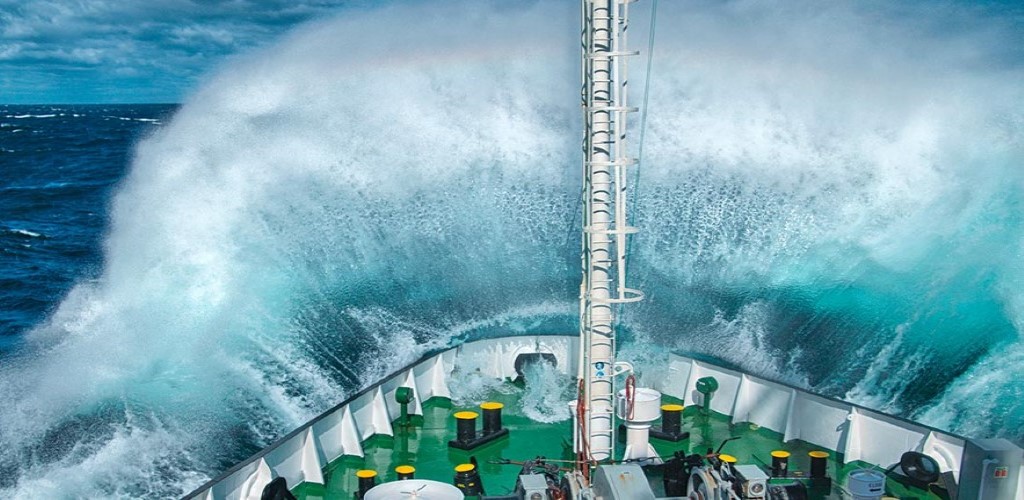Carriers Face Emerging Safety Challenges, Allianz Says

By Malcolm Ramsay
Despite a steady decline in global shipping incidents and losses in recent years, breakbulk shipping lines face a number of new and emerging safety challenges over the next decade, according to the latest analysis by financial services group Allianz.
The findings, published by Allianz Global Corporate & Specialty (AGCS) as part of its annual Safety & Shipping Review report, show that total losses of ships have fallen by half over the last 10 years but underlying changes within particular segments still present challenges.
“The past year showed some general and specific risks with regards to MPV operations globally,” Capt. Andrew Kinsey, senior marine risk consultant at AGCS and lead author of the report told Breakbulk, adding that evolving supply chains hold promise for long-term improvements in project cargo shipping.
Minimum Achievable Levels
The firm reports that the number of shipping incidents declined to 2,703 last year, a 4 percent decrease year-on-year, but notes that 2020 was the first time in five years that losses have not declined, "suggesting the loss total could be stabilizing around the minimum achievable level."
The cargo sector was particularly exposed to loss with cargo vessels accounting for 18 losses last year, more than one-third of all vessels lost in 2020. Over the last decade, AGCS estimates that cargo vessels accounted for 40 percent of total losses, and while noting the "major change" that new technology has made in this period, Kinsey highlighted the steep learning curve this has created for many in the sector.
“While the pace of new technology being introduced into supply chain operations can seem daunting at times, it is important to remember that our prime focus needs to be the safe and efficient delivery of cargo entrusted to our care. In that regard, we should look to welcome new technology that can aid in that effort, including improved tracking and monitoring during the course of transit,” Kinsey said.
The challenge of integrating new technology into existing working patterns is one that is exacerbated by deeper issues surrounding crew change that have been exposed by the Covid pandemic over the last year and a half. AGCS estimates that some 200,000 seafarers remained on board vessels, as of March 2021, with a similar number urgently needing to join ships to replace them.
Serious Concerns
Highlighting the current crew change situation as "a humanitarian crisis" which continues to have a "major impact on the health and wellbeing of seafarers," AGCS predicts that it will have long-term consequences for breakbulk operators for years to come.
The firm outlines numerous issues for the next generation of seafarers, highlighting the additional toll on training and development that shutdowns have caused, alongside the mental health concerns for those working at sea today. This is further compounded by ongoing work pressures resulting from unprecedented delays and demand peaks.
“With hundreds of thousands of crewmembers stuck on board vessels or on extended contracts, I have serious concerns for the next generation of seafarers. The situation with Covid-19 means that we are not training and developing them, while the sector may struggle to attract new blood due to current working conditions,” Kinsey said.
“Shipping is likely to experience a surge in demand as the economy and international trade rebounds with vaccinations. However, many crews are fatigued and have been under immense strain from Covid-19 for over a year. Potentially, we could see a shortage of seamen if the industry struggles to retain or recruit,” he added.
Vessel Size
Issues around crewing have been compounded by the rapid upscaling in vessel size in both the project cargo and container shipping sectors. Capt. Nitin Chopra, senior marine risk consultant at AGCS, noted that while approach channels to existing ports have been dredged deeper and berths and wharves extended, the overall size of existing ports has remained the same and “as a result, ‘a miss’ can turn into ‘a hit’ more often.”
Despite these pressures, there remains the potential for positive change in the project cargo segment as clients are forced to re-evaluate supply chains and seek sustainable long-term solutions to tackle congestion.
“Larger vessel sizes, and in particular the Ever Given grounding, resulted in some rescheduling of heavy-lift voyages as loadings and discharges had to be rescheduled due to delays,” Kinsey added, “however the overall re-evaluation of the supply chain, from a cost effective model, to a more sustainable model, should result in an increase in project cargo work globally as near shoring of production takes hold.”
A further knock-on effect of the pandemic has been the ability of surveyors and maintenance staff to access vessels and perform the necessary checks for safe operations.
“One of the greatest challenges centers around vessel attendance issues for warranty surveyors in the Covid environment,” Kinsey explained. “It is critical for marine insurance that surveyor attendances continue, however we must ensure that vessel safety is not compromised. At Allianz we understand that this has led to more complicated attendances, including quarantine prior to boarding, but we hope that all parties involved continue to work together in order ensure successful voyages.”
New Threats
AGCS calculates that South China, Indochina, Indonesia and Philippines remain the top loss hotspots of the past decade, with risks in these regions driven by a number of factors including high levels of local and international trade, congested ports and busy shipping lanes, older fleets and exposure to extreme weather.
Together, the top 10 maritime regions account for close to 80 percent of all losses over the past decade largely due to traditional risks of human error, piracy or rough seas, however Chopra highlighted the growing role of cyberattacks in forecasts, stating “to date, most cyber incidents in the shipping industry have been shore-based, including ransomware and malware attacks against shipping companies and ports, but with growing connectivity of shipping, and with the concept of autonomous shipping, cyber will become a more important exposure that will require more detailed risk assessment going forward.
